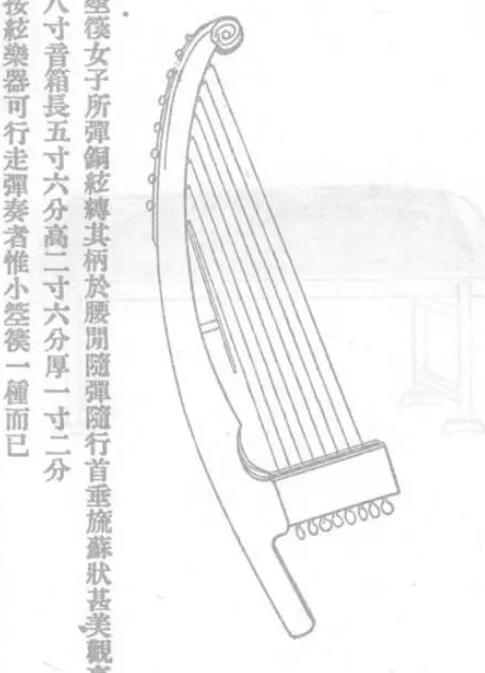The History and Origin of Xiao Konghou
The Xiao Konghou is a plucked stringed musical instrument of the ancient northern ethnic minorities in my country. Also known as horn-shaped konghou. It is a kind of vertical konghou, which belongs to the smaller of the vertical konghou.

The small Konghou, which has a long history, originated from ancient hunting bows, and has the original form of ancient musical bows developing into ancient musical instruments.
Since the Eastern Han Dynasty was introduced into the Central Plains of my country from Persia through the Western Regions, it has been used in the courts of the past dynasties, and in the Sui and Tang Dynasties, it was used in the music of Western Liang, Qiuci, Shule, Gaoli and Tianzhu.
In the frescoes from the Northern Wei Dynasty to the Tang and Song Dynasties in Dunhuang, you can see the horn-shaped Konghou, which the ancient instrumental musicians "hold upright in their arms" and "play with both hands". The traces of the ancient music bow are still preserved, but they are thickened and curved upwards. resonance groove. Not only is the method of tying the strings simple, but the number of strings is mostly eight. The author thinks: This is the small konghou in the angular konghou.
In the Tang Dynasty, Du You's "Tongdian" contained: "Twenty have two (one for three) strings" and Wu Zimu's "Dream Lianglu" in the Song Dynasty contained "Zhang twenty-five strings", which are obviously the big Konghou in the horn-shaped Konghou.
According to the law of the development of things, generally, most of them are simplified first and then complex, and the angular Konghou must be small first and then large, and the strings will go from less to more. Xiao Konghou has been handed down to the end of the Ming Dynasty and was lost in the Qing Dynasty, but it is still recorded in historical records. In the "Comprehensive Examination of Continued Documents of the Qing Dynasty", it is said: "The small Konghou, played by women, has a copper string and its handle is tied around the waist. With the play, the head hangs with tassel, and the shape is very beautiful. … The small Konghou is just one kind." The book also includes a picture of the small Konghou.
 渝公网安备 50010702504639号
渝公网安备 50010702504639号